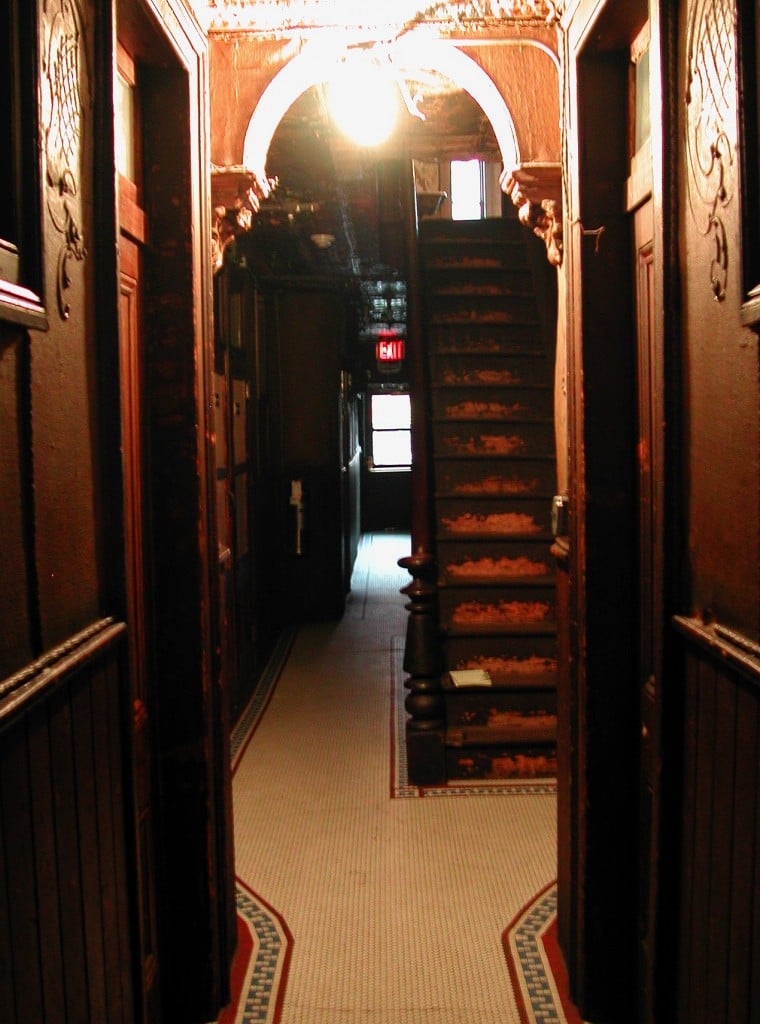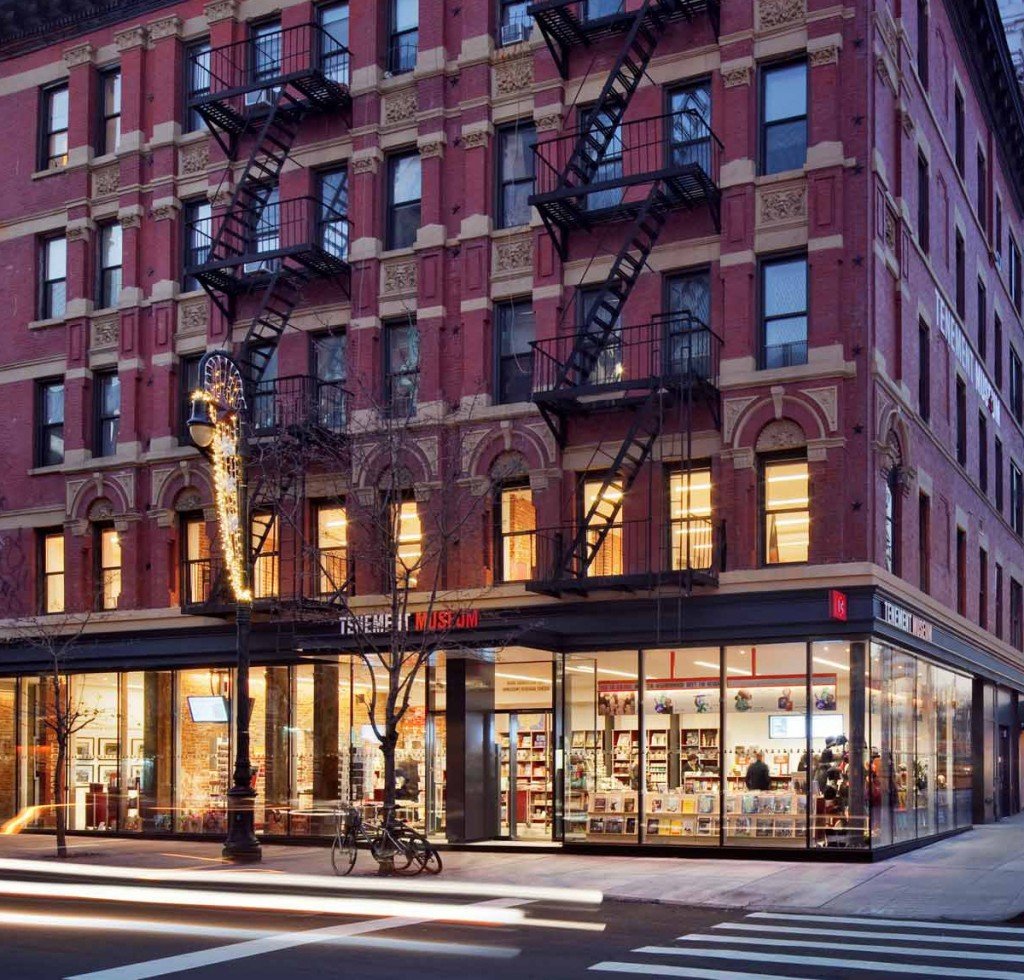Blog Archive
What Would a Tenement Museum Opening in 2064 Look Like?
If in 2064 someone were to create a museum to look at the lives of NYC immigrants in 2014, what form would it take? Is it an old tenement building on the Lower East Side? More likely it would resemble a basement apartment in Queens, Brooklyn or the Bronx. Indeed, housing advocates estimate that accessory dwelling units, mostly composed of basement apartments, amount to over 114,000 units and may house as many as 500,000 New Yorkers.
Just as Manhattan no longer remains the first destination of most immigrants, and actually ranks fourth among the boroughs with regard to immigrant concentration, the tenement has now ceded its place as the characteristic immigrant dwelling to an outer borough basement. Yet the Tenement Museum remains an important site for Americans to learn the history of immigration and consider today’s immigrant and housing issues. Each year over 200,000 people visit recreated turn-of-the-twentieth century tenement apartments and empathize with the Irish, Jewish, Italian and German immigrant families who dealt with husband desertion, economic depression, grueling factory hours, and, yes, congested, dark and unsanitary housing.
Visitors entering the hallway gasp when their guide switches off the light, recreating the darkness as it was experienced by nineteenth-century residents. Only the passage of the 1901 Tenement Housing Law, the guide explains, and its enforcement in 1905, brought gas-light to the tenements, along with indoor plumbing and bathrooms.
In retrospect, the 1901 Tenement Housing law seems a no-brainer. At the time, though, it was fiercely contested by landlords who had to foot the bill for the improvements. At 97 Orchard, the bill came to $8000, a not insignificant sum to the immigrant landlords who had purchased the entire building for $20,500. No wonder real estate interests fought the law in courts. Perhaps even tenement residents were cautious: what if these improvements led to higher rents?
Championing the law and housing changes were progressive reformers who lived beyond the tenement districts and had the privilege and freedom to consider the long-term importance of improved conditions and enforced standards. Robert De Forest and Lawrence Veiller, of the Charity Organization Society, rented the tony Sherry’s restaurant on Fifth Avenue to display the tenement districts through photographs, charts and cardboard dioramas. They aimed to prove to the middle and upper classes how dire the tenement situation was, and how needed were the reforms. Veiller’s claim that human beings had a “God-given right to light and air” succeeded, and the Tenement Housing Law was passed that year, largely due to the activism of the progressive middle and upper class.

This is what the hallway at The Tenement Museum at 97 Orchard look like today? What might this hallway look like a tenement museum opening in 50 years?
Thus every day, and almost every hour, the question of what constitutes fair housing, and perhaps more importantly, the debate over who is responsible for creating and maintaining these standards, arises in our tenement. Delving into the issue of today’s basement units presents tensions that recall the debates of a century ago.
In both cases, the emphasis is on sub-standard immigrant housing. Today, the immediate players are immigrant landlords—who often live in one-family homes out of which they’ve carved cellar and basement apartments and on whose rent they depend to pay their mortgage, as well as immigrant renters, who clamor for the affordable rent (often less than $1000). Also in the mix are real estate brokers and mortgage companies who often assure prospective buyers of rental income. Finally, inspectors from the city’s Department of Buildings issue upwards of 4400 violations a year.
Observing and documenting this situation are community organizations and housing advocates like Chhaya Community Development Corporation in Jackson Heights, Queens. As part of a 2008 report co-authored with the Citizens Housing and Planning Council, they canvassed several neighborhoods, compiled ambitious studies filled with graphs and charts, and made a nuanced case for pilot studies that would relax the outright ban on basement dwellings. Whereas in 1900 Veiller and De Forest argued for the passage of a binding law to improve the conditions, Chhaya and others note that the laws are outdated, and fail to address present day realities. In fact, were this law to be strictly enforced, hundreds of thousands of lives would be disrupted.
Instead, housing advocates, some elected officials and community groups grasp how important these units are precisely because they are affordable in an increasingly unaffordable city. Rather than banning them altogether, they seek to relax the rules and test conversions of the units in order to develop a more flexible standard. In suggesting low-cost loans, property tax abatements and free engineering assistance to examine and improve conditions, they approach the problem in a holistic manner, hoping that these measures will ease the landlords’ expenditures to bring the units to a higher standard while offering affordable rents. Their proposition to pilot these programs seems a nuanced way to begin to find solutions to what otherwise remains an intractable problem.
In a recent visit, Seema Agnani, Director of Chhaya, emphasized the difficulty of launching the pilot or making any change because of the number of stakeholders involved. The mayor of New York, Agnani emphatically stated, would need to be behind this effort. In May, Mayor de Blasio’s housing plan pledged “to work with the relevant stakeholders to examine how best to bring these units into the regulated housing system.”
Theodore Roosevelt, then Governor of New York State, delivered the opening speech for the Tenement House exhibit at Sherry’s in February of 1900. He noted how both individual citizens and the government needed to join forces to improve housing; he also observed, “Of course, struggle as we may to improve conditions, those who come after us will have to struggle too.” As the de Blasio administration addresses this issue, the Tenement Museum assumes its role as a connector between past and present, and offers its nighttime program arena as a public square. We invite the key players and the broader public to explore the issues, and continue the struggle.
Imagine: in 2064 a museum of immigration headquartered on a block of two-story homes in Jackson Heights, Queens. Schoolchildren, European and Asian tourists, and New Yorkers in search of history line up for educator-led tours that delve into the well-researched family histories of the Bangladeshi and Pakistani families who settled into these homes as landlords and renters. As they enter a doorway leading to a basement apartment, the educator describes how a 2014 debate brought together an array of advocates, agencies and a progressive mayor to improve the day-to-day lives of the families on this block, and many throughout the boroughs.
– Dr. Annie Polland, the Senior Vice President of Programs & Education at The Lower East Side Tenement Museum
